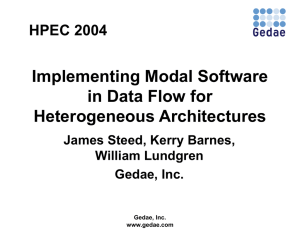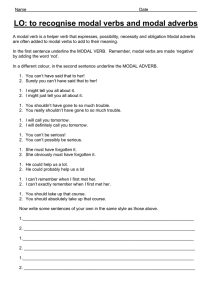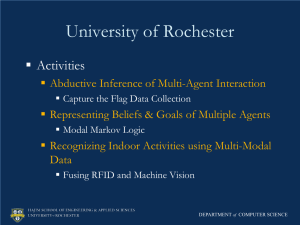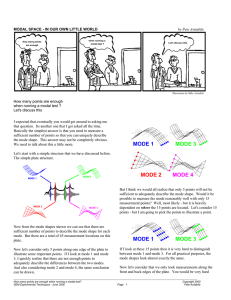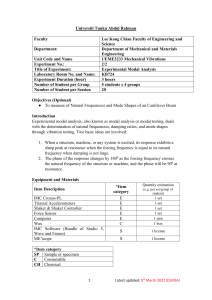File
advertisement
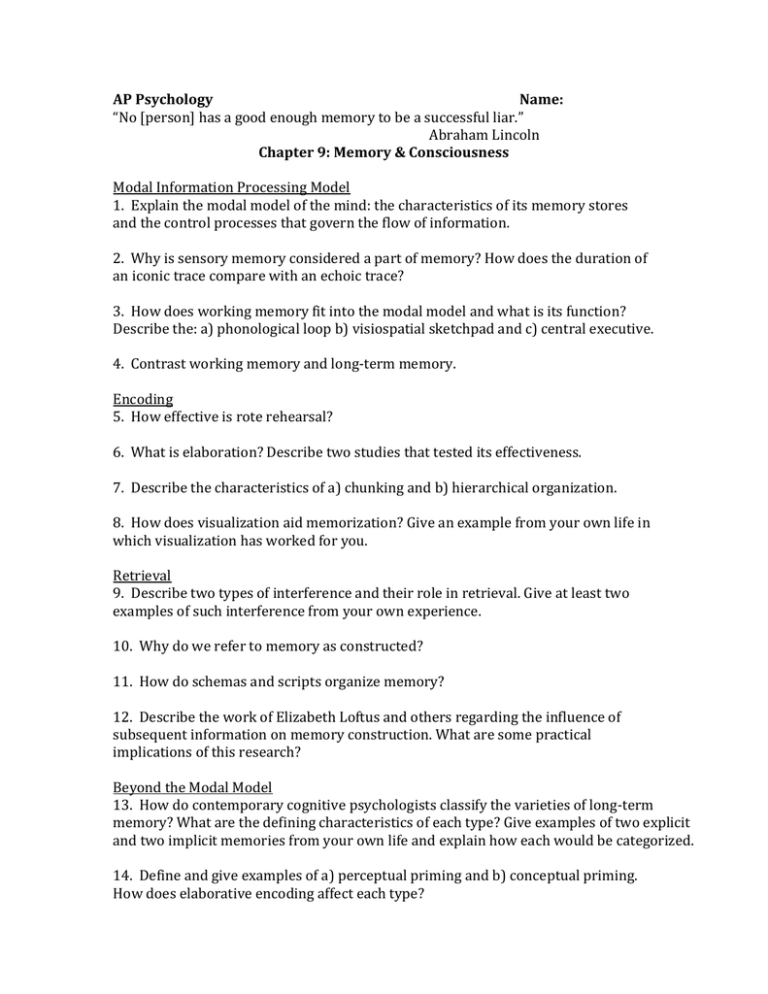
AP Psychology Name: “No [person] has a good enough memory to be a successful liar.” Abraham Lincoln Chapter 9: Memory & Consciousness Modal Information Processing Model 1. Explain the modal model of the mind: the characteristics of its memory stores and the control processes that govern the flow of information. 2. Why is sensory memory considered a part of memory? How does the duration of an iconic trace compare with an echoic trace? 3. How does working memory fit into the modal model and what is its function? Describe the: a) phonological loop b) visiospatial sketchpad and c) central executive. 4. Contrast working memory and long-term memory. Encoding 5. How effective is rote rehearsal? 6. What is elaboration? Describe two studies that tested its effectiveness. 7. Describe the characteristics of a) chunking and b) hierarchical organization. 8. How does visualization aid memorization? Give an example from your own life in which visualization has worked for you. Retrieval 9. Describe two types of interference and their role in retrieval. Give at least two examples of such interference from your own experience. 10. Why do we refer to memory as constructed? 11. How do schemas and scripts organize memory? 12. Describe the work of Elizabeth Loftus and others regarding the influence of subsequent information on memory construction. What are some practical implications of this research? Beyond the Modal Model 13. How do contemporary cognitive psychologists classify the varieties of long-term memory? What are the defining characteristics of each type? Give examples of two explicit and two implicit memories from your own life and explain how each would be categorized. 14. Define and give examples of a) perceptual priming and b) conceptual priming. How does elaborative encoding affect each type?


